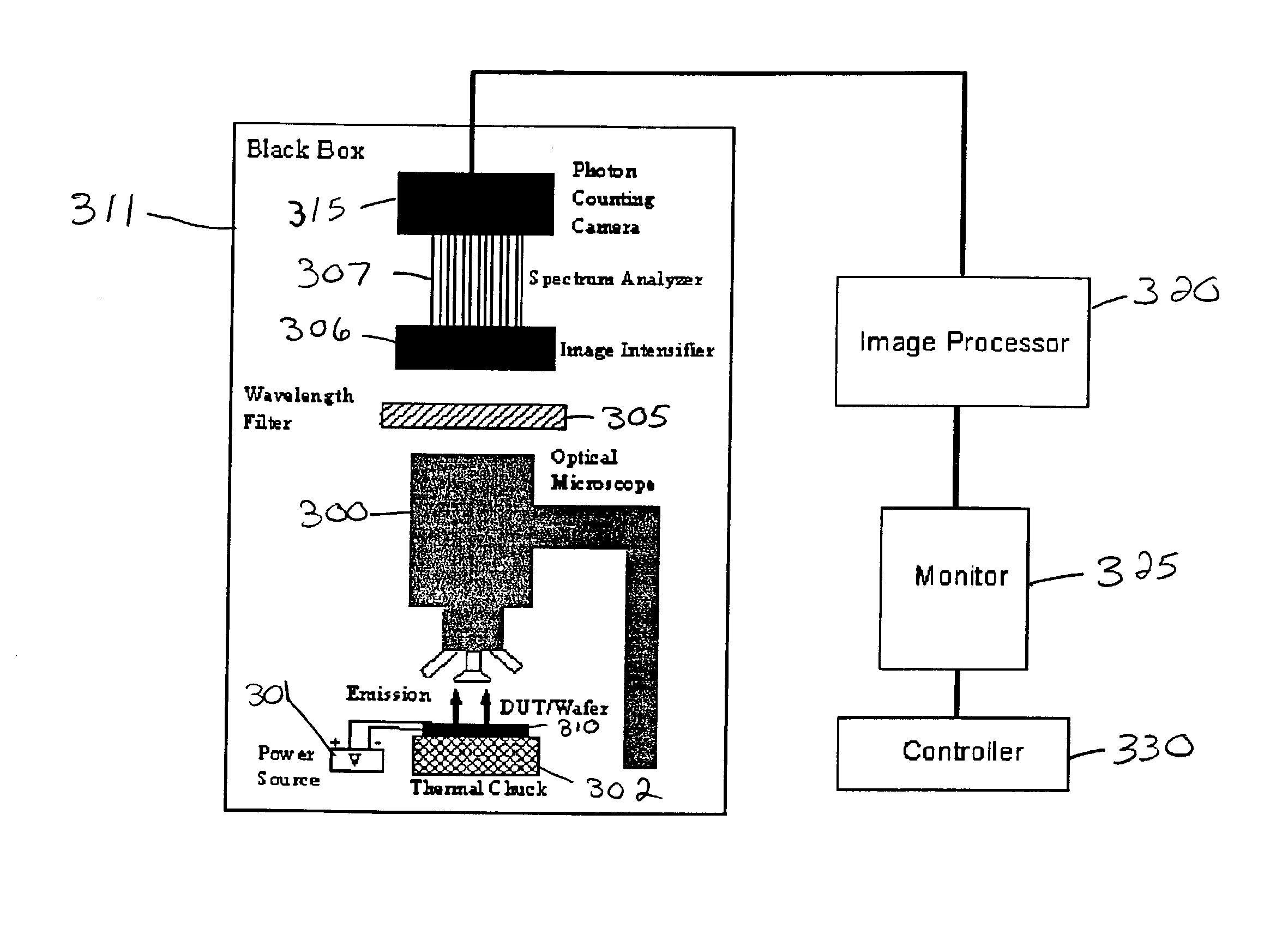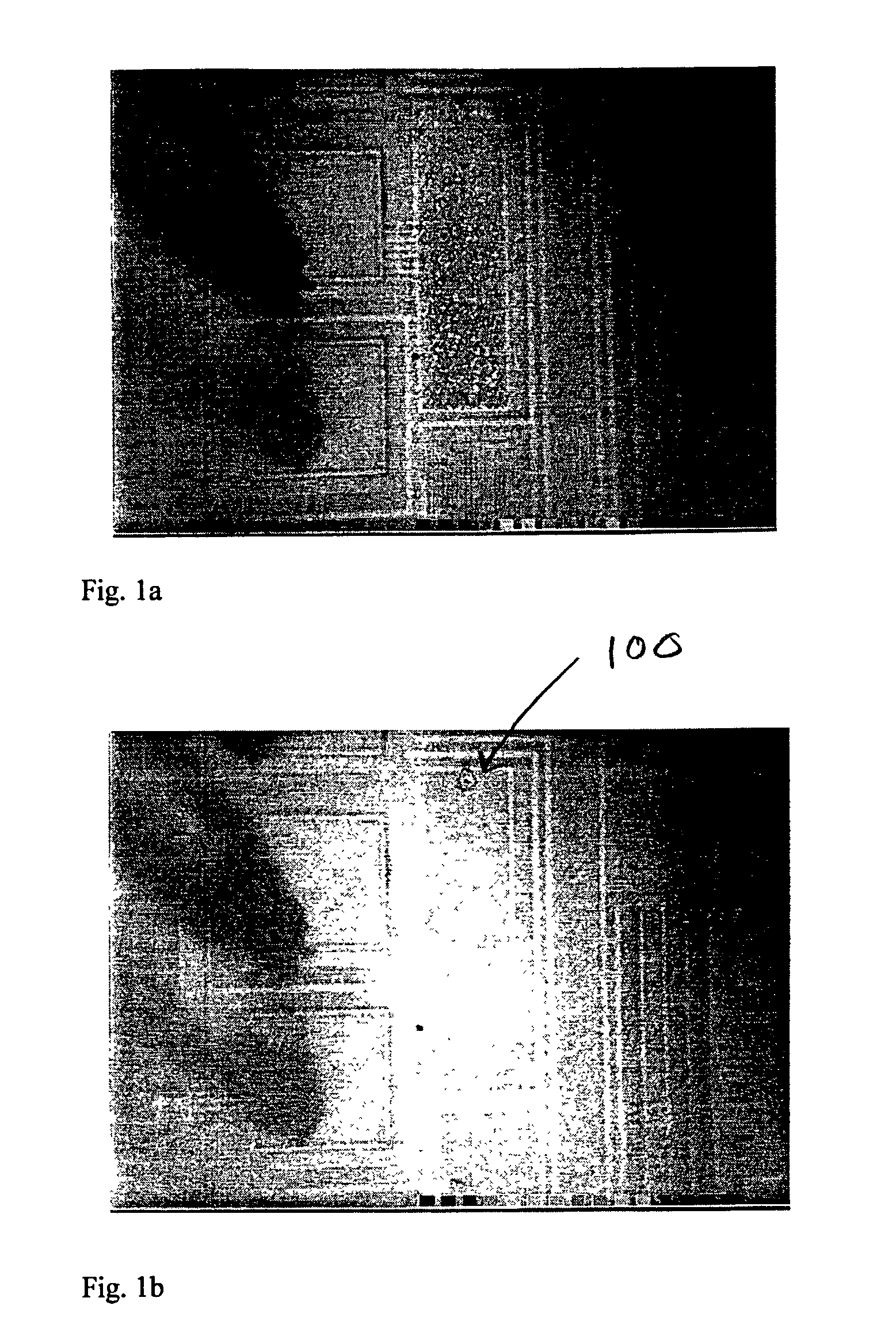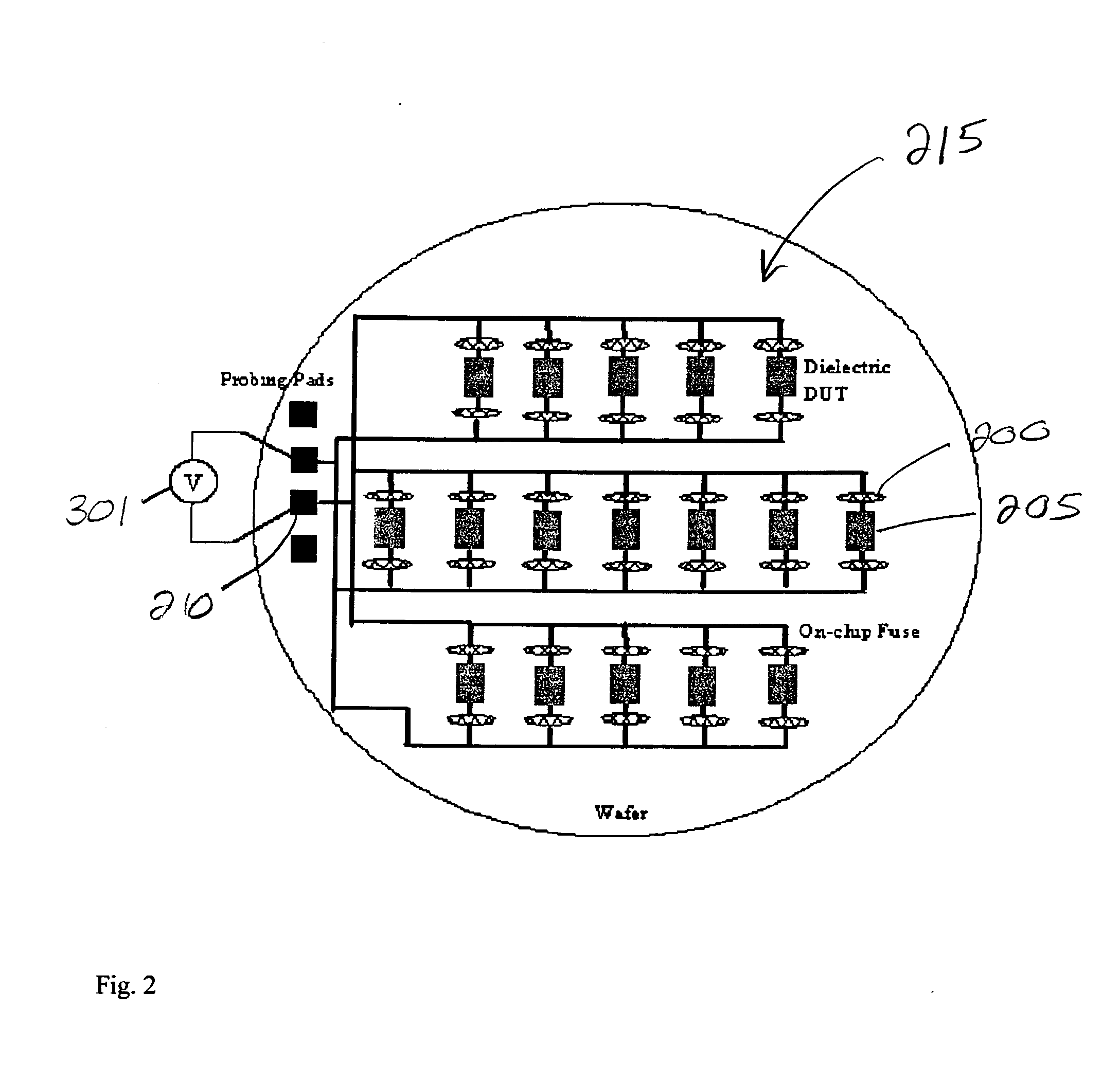Methodology and apparatus using real-time optical signal for wafer-level device dielectrical reliability studies
a real-time optical signal and reliability study technology, applied in the field of system and method for testing the reliability of integrated circuit structures, can solve the problems of introducing more uncertainties and limitations for failure time detection, affecting the reliability of traditional dielectric time-to-breakdown reliability stress, and affecting the reliability of traditional dielectric time-to-breakdown stress
- Summary
- Abstract
- Description
- Claims
- Application Information
AI Technical Summary
Benefits of technology
Problems solved by technology
Method used
Image
Examples
Embodiment Construction
[0026] The invention uses an optical emission microscopy technique with spectral resolution capabilities for real-time monitoring of the oxide wear out and breakdown process of many devices across the whole wafer simultaneously. With the real-time image recording, the time of oxide breakdown, the location of breakdown, the change of the light emission intensity during the stress, and the spectral response of the emitted light from breakdown spots provide extensive information regarding oxide wear-out and breakdown physics. With inventive test site design, only one voltage source (for regular constant voltage stress) or current source (for regular constant current stress) is required for stressing and monitoring many devices across the wafer simultaneously. The invention utilizes a simple and reliable setup with very limited hardware to achieve fast massively parallel stress for oxide breakdown at the wafer level.
[0027] It is possible for good devices to emit light as well as failing...
PUM
 Login to View More
Login to View More Abstract
Description
Claims
Application Information
 Login to View More
Login to View More - R&D
- Intellectual Property
- Life Sciences
- Materials
- Tech Scout
- Unparalleled Data Quality
- Higher Quality Content
- 60% Fewer Hallucinations
Browse by: Latest US Patents, China's latest patents, Technical Efficacy Thesaurus, Application Domain, Technology Topic, Popular Technical Reports.
© 2025 PatSnap. All rights reserved.Legal|Privacy policy|Modern Slavery Act Transparency Statement|Sitemap|About US| Contact US: help@patsnap.com



